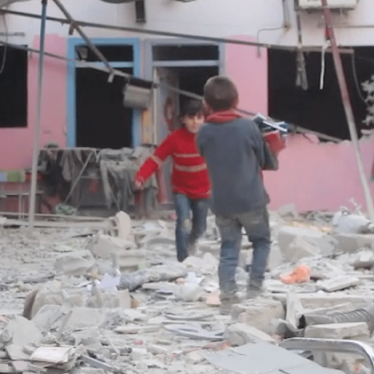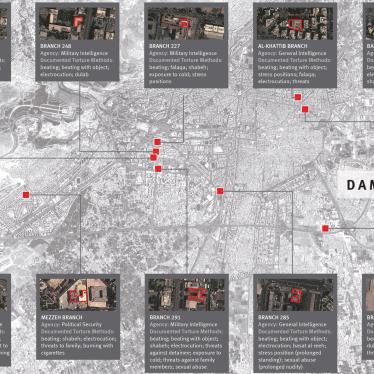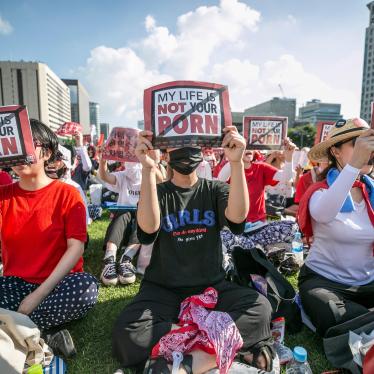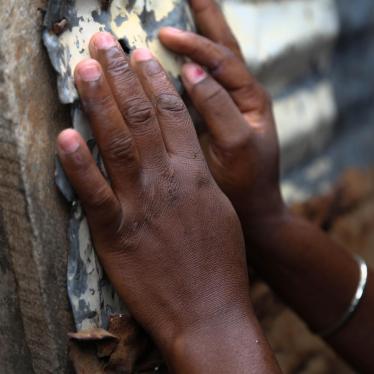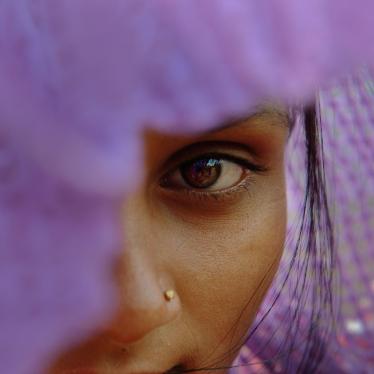(Beirut) – The state of a mass grave in Damascus and statements by people living in the surrounding area suggest that the area is a mass crime scene and may have been the site of other summary executions, Human Rights Watch said today.
Human Rights Watch visited the site in the southern Damascus neighborhood of Tadamon on December 11 and 12, 2024, finding scores of human remains both at the location of an April 2013 massacre and strewn throughout the surrounding neighborhood. Transitional Syrian authorities should take steps to urgently secure and preserve physical evidence across the country of grave international crimes by members of the former government.
“Without immediate Syrian and international efforts to secure and preserve likely sites of mass crimes for coordinated exhumations and forensic investigations, there is a serious risk that critical evidence for accountability will be lost,” said Hiba Zayadin, senior Middle East and North Africa researcher at Human Rights Watch. “The loved ones of people so brutally killed here deserve to know what happened to them. The victims deserve accountability.”
Human Rights Watch confirmed the mass grave’s exact location after verifying and geolocating a previously leaked video, taken in April 2013, showing summary executions by Syrian government forces and affiliated militia. After the fall of the Assad government, Human Rights Watch researchers visited the site and took steps to document it.
Researchers retraced the final moments of the 11 blindfolded victims shown in the video who were all shot at close range and pushed into the machine-dug grave, alongside the bodies of 13 other people. Human Rights Watch researchers also spoke to a current resident of the area who said that a pro-government paramilitary group forced him and other residents to bury bodies in pre-dug graves and dig tunnels in the area in 2015 and 2016.
At the site, researchers found human remains, including teeth and skull, jaw, hand, and pelvic bones on the ground and in a bag collected by residents. Human remains are also scattered on the floor of buildings next to the mass grave, leading researchers to conclude that other people were most likely killed or buried in the same location. Human Rights Watch could not confirm whether the remains found are those of the victims in the video, nor whether more bodies are buried there. It is unclear whether or the extent to which bodies were taken out of the area.
Residents in Tadamon said that executions in the area were common. In interviews in 2022, they described at least 10 other incidents of summary killings between August 2012 and January 2014 in Tadamon, Daraya, Moadamiya, and surrounding areas. This evidence suggests that other bodies were buried in and around the area. The area was also the site of armed clashes between Syrian government forces and opposition fighters affiliated with the Free Syrian Army (FSA) at numerous points between 2012 and 2013.
Human Rights Watch began investigating the massacre in October 2021, after receiving a leaked video discovered by a member of a Syrian militia on a laptop and handed to Annsar Shahhoud and Uğur Ümit Üngör, researchers at the University of Amsterdam and the NIOD Institute for War, Holocaust and Genocide Studies in Amsterdam, and ARD, a German Public Broadcaster.
“This video, filmed by the perpetrators themselves who laughed as they killed their victims, shows the Syrian government’s callous disregard for people’s lives,” Zayadin said. “This massacre is just one horrific incident in a pattern of state violence and apparent war crimes.”
Human Rights Watch worked with a spatial investigator to create a 3D model of the location based on the video in order to establish the grave’s dimensions and corroborate the location and the number of victims. Researchers determined the grave to be approximately three by seven meters and two meters deep.
Shahhoud and Üngör received other videos from an anonymous source, as part of a two-year investigation detailed in New Lines Magazine. Human Rights Watch has not yet reviewed these additional videos, but they reportedly show that 288 people, including 7 women and 12 children, some infants, were killed in the Tadamon area; 41 of them during this one incident.
A few weeks before Human Rights Watch was due to publish its findings in 2022, researchers received credible reports of a security threat and halted its publication. Details about the perpetrators involved and the videos were later published by The Guardian, New Lines Magazine, and ARD.
One 24-year-old resident of Tadamon, who lived in the area throughout the conflict, told Human Rights Watch that, until at least 2020, members of the National Defense Forces (NDF), a pro-government paramilitary group, had barred residents from approaching an area of at least one square kilometer that encompassed the mass grave. He said that in late 2015 and early 2016, they forced him, a 15-year-old boy at the time, to come to the area to build tunnels, and pull bodies from the rubble and throw them into pre-dug graves while NDF members shot between their legs.
Another resident said that on May 20, 2013, his mother, 61, his sister, 27, and his daughter, 12, went to their house near this area to pick up some of their belongings and never came back. He said he has not heard from them and had submitted documents reporting them missing to the authorities.
The government of ousted President Bashar al-Assad used summary killings in conjunction with other unlawful tactics, such as arbitrary arrests, indiscriminate attacks, and starvation, to forcibly displace residents of opposition-held areas. After the former government retook many former opposition-held areas by 2018, it designed and implemented policies that effectively allowed it to block people it deemed opponents from returning to their homes.
Extrajudicial killings and summary executions are serious violations of international human rights law and can amount to crimes against humanity when carried out in a systematic or widespread fashion as state policy, Human Rights Watch said. Human Rights Watch has documented the systematic use of torture under the previous government as a crime against humanity.
Syria’s transitional authorities should secure, collect, and safeguard evidence, including from mass grave sites and government records and archives, that will be vital in future criminal trials and legal proceedings. Access to due process and fair trials for alleged perpetrators of the Tadamon massacre are vital. Transitional authorities should ensure unhindered access to independent monitors who can assist with preserving evidence, including the International, Impartial and Independent Mechanism for Syria and the United Nations Commission of Inquiry on Syria. The authorities and independent bodies should involve Syrian human rights groups in these efforts. Other countries should assist in efforts to secure and safeguard the evidence.
The Syrian transitional authorities should also cooperate with the International Committee of the Red Cross which can provide critical expertise and support to safeguard these records with the view to assist in clarifying what happened to missing people and thereby enable families, left in excruciating uncertainty for years, if not decades, to obtain answers.
“The international community should provide support to local authorities and relevant groups for the preservation of this site and similar sites across the country so that evidence is collected and those responsible can be held to account,” Zayadin said.




